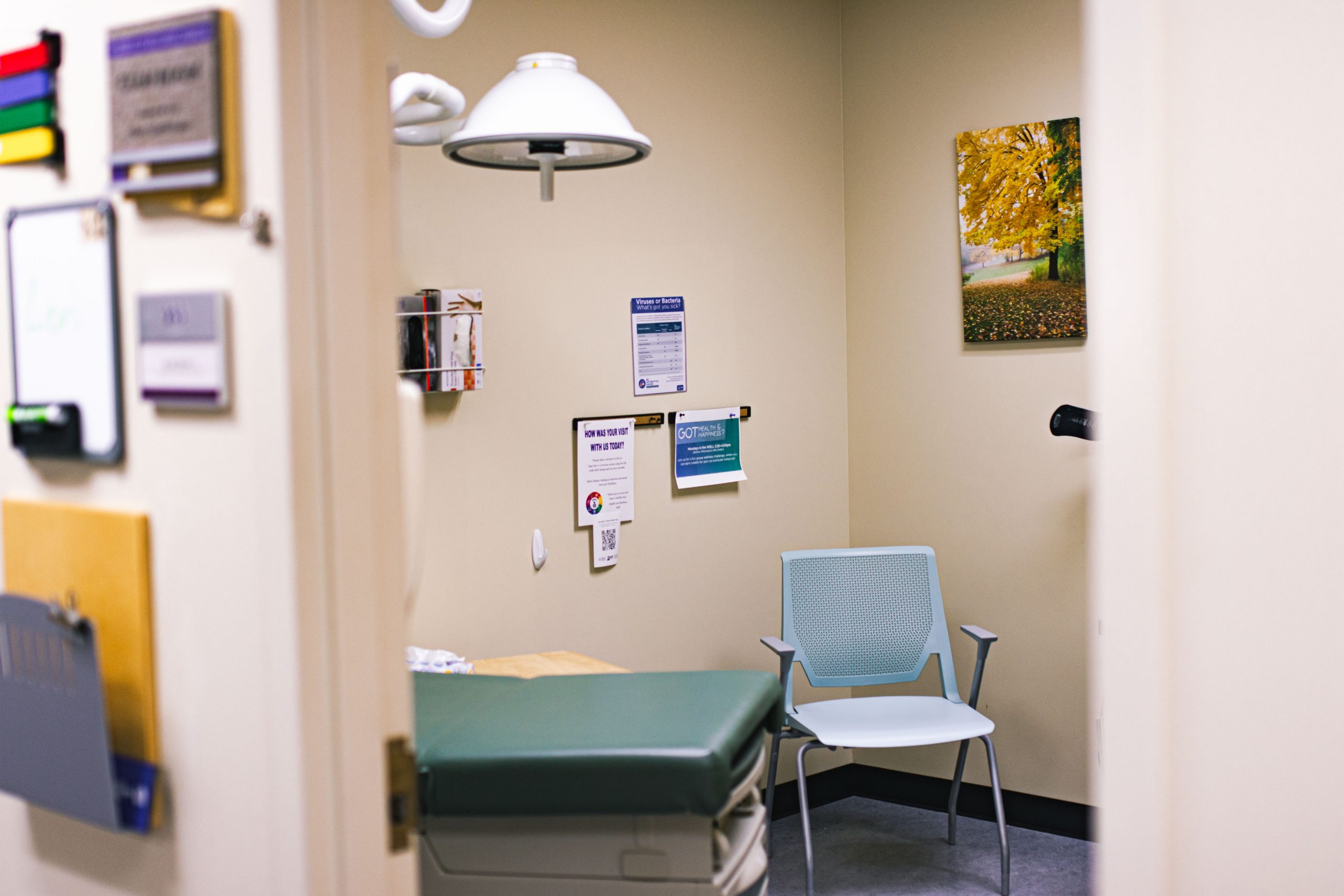
Sexually transmitted infections, STIs, are common when you are sexually active. 1 in 3 young adults will have an STI by the age of 25. It may sound scary, but most STIs are treatable and are preventable by using barrier methods.
It’s important to get tested often as it is just as common not to have any signs or symptoms. If symptoms do arise, make sure to get tested and follow the instructions from your provider.
Please Note
References to “male” and “female” in this article refer the anatomy and sex organs, not gender identity.
The Clam, Clap, Syph and Trich
Chlamydia (clam), gonorrhea (clap), syphilis (syph) and trichomoniasis (trich) are all common bacterial STIs. Most people who have these infections do not show any symptoms. The symptoms between these STIs and many non-STI concerns are common.
It’s important to get tested often and to get tested for multiple at the same time if a symptom may occur. Testing for STIs may consist of a swab of the penis or vagina, urine sample, or blood test.
Chlamydia Symptoms
Most people who have chlamydia don’t show any symptoms.
- Pain or burning while peeing
- Pain during sex
- Lower belly pain
- Abnormal vaginal discharge (may be yellowish and have a strong smell)
- Bleeding between periods
- Pus or a watery/milky discharge from the penis
- Swollen or tender testicles
- Pain, discharge and/or bleeding around the anus
Gonorrhea Symptoms
Female Symptoms
Most people with vaginas who get gonorrhea don’t have any symptoms. If they do, gonorrhea symptoms show up within about a week of being infected. These include:
- Pain or burning feeling when you pee
- Abnormal discharge from the vagina that may be yellowish or bloody
- Bleeding between periods
Male Symptoms
People with penises are more likely to have symptoms if they get gonorrhea. The symptoms usually begin within a week after they get the infection. These include:
- Yellow, white, or green discharge from your penis
- Pain or burning feeling when you pee
- Pain or swelling in your testicles
Anal Symptoms
Gonorrhea can also infect your anus if you have anal sex, or you may spread the infection to your anus from another part of your body (such as wiping when going to the bathroom). Anal gonorrhea often doesn’t have any symptoms. But signs of gonorrhea in your anus can include:
- Itching in or around your anus
- Discharge from your anus
- Pain when you poop
Oral Symptoms
Gonorrhea infections in the throat also rarely cause symptoms. If symptoms do show up, it’s usually just a sore throat.
Syphilis Symptoms
Syphilis can be kind of confusing because there are a few different stages, and they can overlap or happen around the same time. And there may be times when you have no symptoms at all — but the infection will still be there until you get it treated. Symptoms can vary with each stage, and they might not always happen in the same order for everyone.
Primary Stage
A syphilis sore (called a chancre) pops up — that sore is where the syphilis infection entered your body.
Chancres are super contagious and can show up on your vulva, vagina, anus, penis, scrotum, and rarely, your lips or mouth. Chancres are usually firm, round, and painless, or sometimes open and wet. It’s easy to mistake a chancre for an ingrown hair, pimple, or harmless bump.
Sores often aren’t painful and can be in hidden places you may not notice them such as: deep in your vagina, under your foreskin, inside your rectum, and other places that are hard to see.
Secondary Stage
Secondary stage symptoms include rashes on the palms of your hands, soles of your feet, or other parts of your body. The secondary syphilis rash is sometimes hard to see, and it usually doesn’t itch. You may feel sick and have mild flu-like symptoms:
- Slight fever
- Feeling tired
- Sore throat
- Swollen glands
- Headaches and muscle aches
- Sores in your mouth, vagina, or anus
- Weight or hair loss
Late Stage
In between the secondary stage and the late stage, there may be times when your syphilis infection is latent (there are no signs or symptoms at all) for months or even years — but you still need treatment to get rid of it.
Syphilis is easily curable with antibiotics in the early stages. If you get treatment late, it will still cure the infection and stop future damage to your body. However, damage that late-stage syphilis has already caused can’t be changed or healed.
Trichomoniasis Symptoms
Trichomoniasis can cause symptoms in people of any gender. But trich is most likely to cause vaginitis (inflammation or irritation of the vagina). Symptoms of trich include:
- Green, yellow, gray, frothy, and/or bad-smelling vaginal discharge
- Blood in your vaginal discharge
- Itching and irritation in and around your vagina or inside your penis
- Swelling around your genitals
- Pain during sex
- Pain and burning when you pee
- Urge to pee a lot
- Discharge from your urethra
Treatment
Bacterial STIs can be treated using antibiotics. Make sure to take all of your medication and follow the treatment prescribed by your healthcare provider. Avoid having sex with others until you finish your medication since the infection stays in your body until you finish the antibiotics.
If you have signs or symptoms of a STI or have concerns, make an appointment at Health & Wellness Services by calling 507.457.5160. Getting tested often, wearing condoms and using barrier methods can help reduce the risk of STIs and future STIs.
If you have recently tested positive for an STI, we encourage you to have a conversation with your previous partner(s) and encourage them to get tested to stop the spread of STIs to more people.